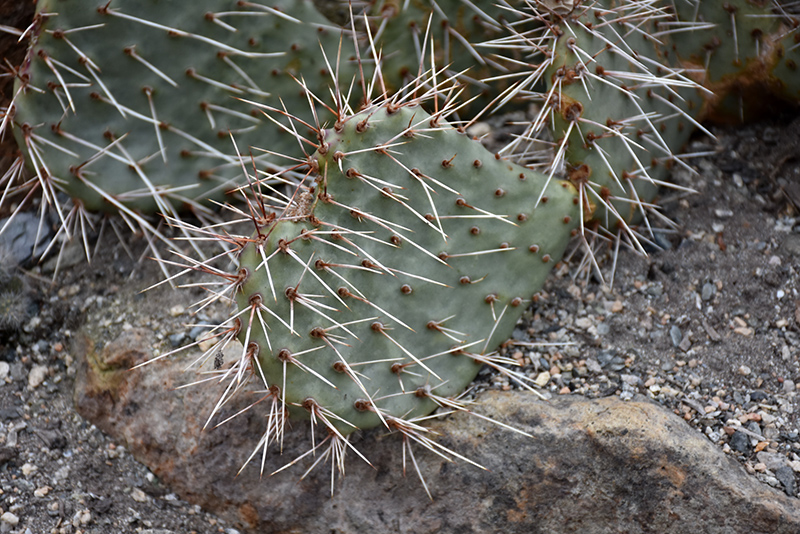Mesa Melon Prickly Pear Cactus
Description
A low growing spreading succulent cactus with showy coral flowers that bloom in mid-spring; exceptional as an accent for rock gardens and planters; needs perfect drainage and sandy or gravelly soils
Landscape Attributes
Mesa Melon Prickly Pear Cactus is a small succulent evergreen plant with a spreading habit of growth that trails along the ground. As a type of cactus, it has no true foliage; the body of the plant is wholly comprised of a linked series of spiny bluish-green pads which are connected together to form the branches of the plant.
Mesa Melon Prickly Pear Cactus is recommended for the following landscape applications;
Planting & Growing
Mesa Melon Prickly Pear Cactus will grow to be about 18 inches tall at maturity, with a spread of 3 feet. It grows at a medium rate, and under ideal conditions can be expected to live for approximately 20 years.
This plant should only be grown in full sunlight. It prefers dry to average moisture levels with very well-drained soil, and will often die in standing water. It is considered to be drought-tolerant, and thus makes an ideal choice for a low-water garden or xeriscape application. Like most succulents and cacti, this plant prefers to grow in poor soils and should therefore never be fertilized. It is not particular as to soil pH, but grows best in sandy soils. It is quite intolerant of urban pollution, therefore inner city or urban streetside plantings are best avoided. This particular variety is an interspecific hybrid. It can be propagated by division; however, as a cultivated variety, be aware that it may be subject to certain restrictions or prohibitions on propagation.
Mesa Melon Prickly Pear Cactus is a fine choice for the garden, but it is also a good selection for planting in outdoor pots and containers. Because of its spreading habit of growth, it is ideally suited for use as a 'spiller' in the 'spiller-thriller-filler' container combination; plant it near the edges where it can spill gracefully over the pot. Note that when growing plants in outdoor containers and baskets, they may require more frequent waterings than they would in the yard or garden. Be aware that in our climate, this plant may be too tender to survive the winter if left outdoors in a container. Contact our experts for more information on how to protect it over the winter months.

